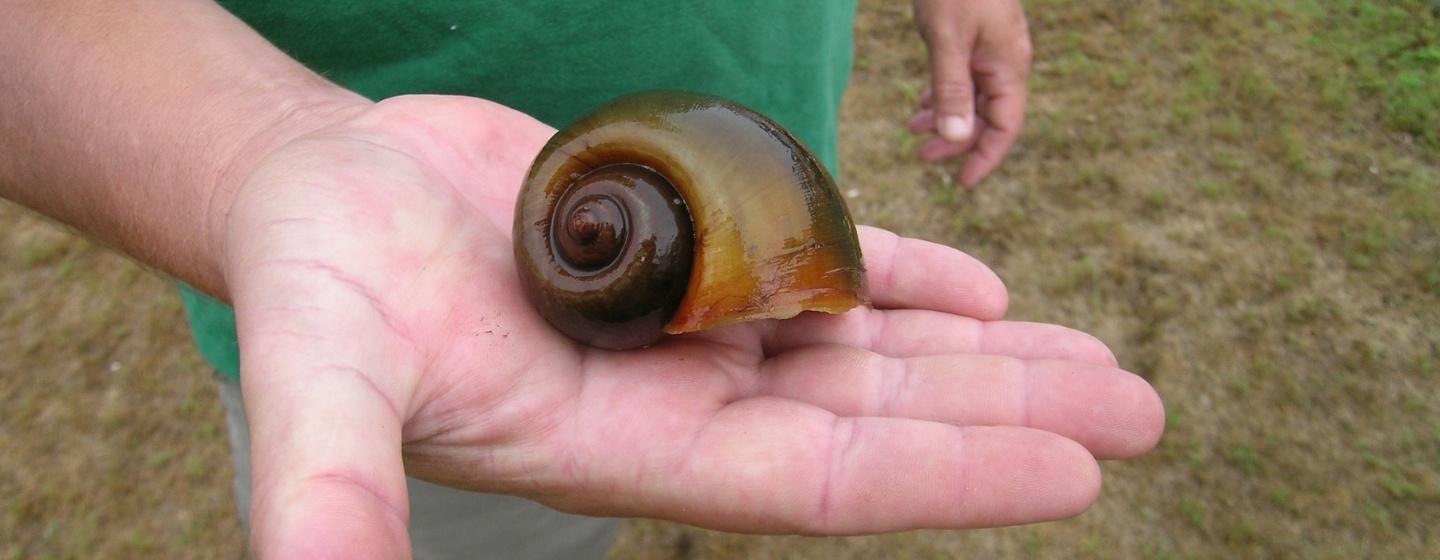Toxic Snails Found in NC River


The name “apple snails” certainly doesn’t sound that ominous. After all, apples are tasty and snails are, well, slow and unique.
But the North Carolina Wildlife Resources Commission (NCWRC) is warning that this toxic, invasive snail has been identified in North Carolina for the first time. What’s worse, a fast-spreading population is thriving along the Lumber River in Lumberton, about 95 miles south of Raleigh.
This is the first known population of apple snails in North Carolina. The snails are native to South America, but the problematic invasive species has been introduced in Europe, Asia and several other states in the U.S. They are popular in aquariums, so it’s possible that’s how the snails found their way to North Carolina according to NCWRC.
Apple snails are big. NCWRC biologists say the squishy creatures grow up to six inches long and produce clusters of bright pink eggs. You can see the snail and its eggs in the image above.
The agency says it’s those unusual colored eggs that alarmed a concerned citizen, who sent photos to the NCWRC. A biologist from the NCWRC inspected multiple sites along the Lumber River and collected additional egg masses for submission to the North Carolina Museum of Natural Sciences in Raleigh. Museum researchers confirmed the identification of apple snail eggs.
Subsequent surveys by agency biologists detected adult snails and eggs near the I-95 bridge crossing the Lumber River, at the High Hill Boating Access Area and in Five Mile branch, a tributary of the Lumber River.
Remember, apple snails are an invasive species. The agency says apple snail grazing can damage plants used by many native aquatic species. The snails have also been seen feeding on amphibian eggs.
In addition, apple snails are a risk to people because they may carry rat lungworm, which can cause a potentially fatal disease in humans if eaten raw or undercooked. In addition, the snails’ egg masses contain a toxin that can cause skin and eye rashes.
Apple snails are most easily recognized by their distinctive large, bright pink egg clusters, which are laid on solid surfaces such as tree trunks or concrete, above the waterline and along the edges of streams, rivers or ponds.
When the eggs hatch, the young snails drop into the water, where they grow into fully aquatic adults roughly two to six inches in size. That’s much larger than the native aquatic snails found in the state. Female apple snails can lay eggs every week, which allows populations to grow and spread quickly once they are established.
Because apple snails are so destructive, it’s illegal to transport, purchase, possess, sell or stock apple snails in North Carolina. The NCWRC is asking people to report suspected apple snails or their egg masses by sending a photo and location to the Aquatic Nuisance Reporting Tool.
After reporting, the agency wants you to destroy the snail by crushing it and scraping it into the water with any tool such as a stick or boat paddle, making sure the eggs sink. Be sure not to touch the eggs.
Finally, here are tips to help stop the spread of aquatic nuisance species.